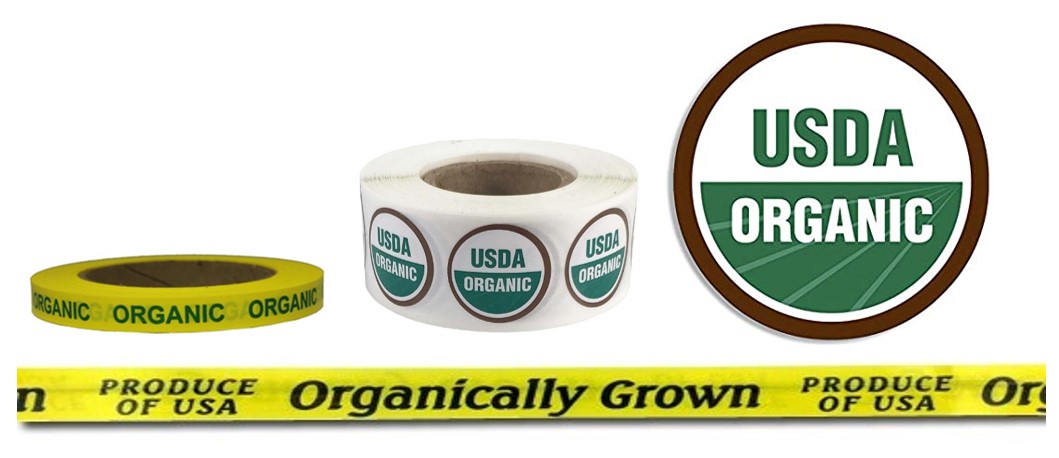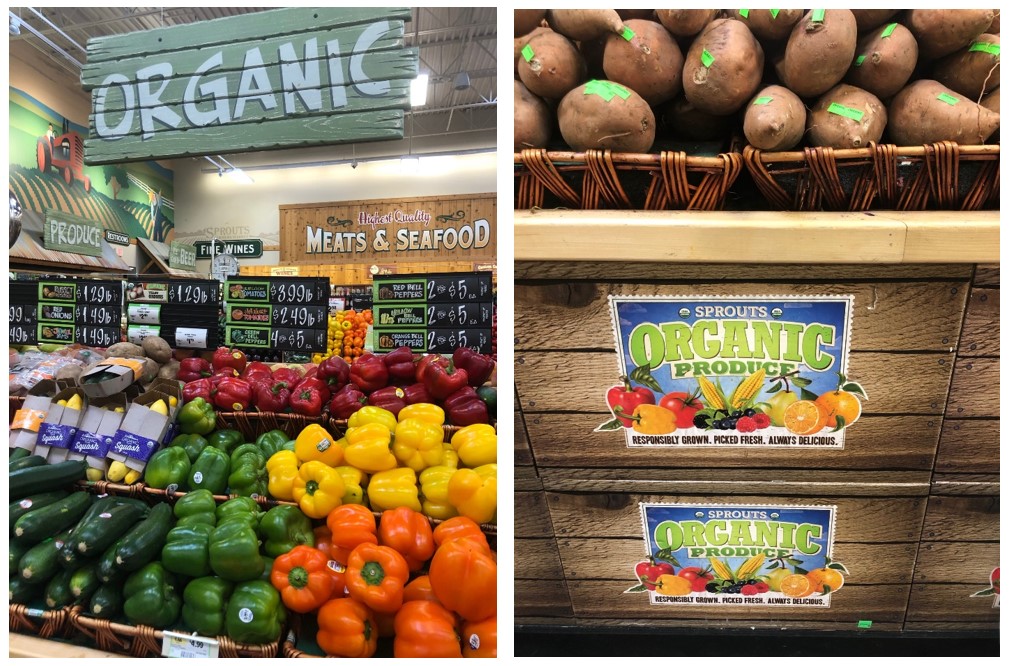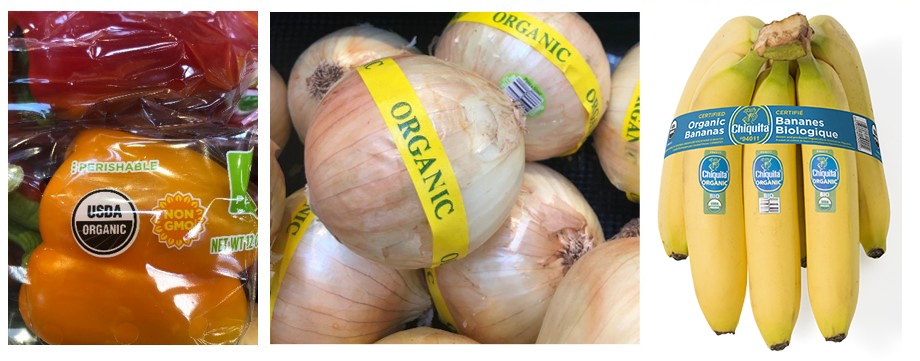Photos courtesy Scott Schuette
U.S. organic sales in 2020 jumped +12.4%, reaching $61.9 billion, according to a new report from the Organic Trade Association. Did all retailers capture every organic fruit and veggie sale possible during 2020? I do not think so.
I firmly believe that item misidentification at the register is still cheating us out of maximum retail sales and profit dollar potential.
When clerks incorrectly scan items – frequently as lower-priced alternatives – the results include loss of sales dollars, loss of profit dollars and loss of store integrity with the customer.
Item misidentification also frustrates produce team members.
Scan data is the basis for adjusting assortment and reordering product, so when those numbers are skewed, it throws a wrench in those processes along with hurting sales.
Produce team members become reluctant to expand specialty and organic selection for fear that the product will end up inadvertently being rung up at much lower conventional prices, negatively impacting their bottom-line results.
Problem potential
Look-alike items are always a challenge to properly identify at the front register. Sweet onions versus yellow onions. Cilantro versus Italian parsley. Peaches versus nectarines. Cucumber versus zucchini. These and more cause identification issues with cashiers.
What might seem like small mistakes can have big financial consequences.
Consider the loss when a $1.49 per pound sweet onion gets rung up as a conventional yellow onion on sale for 49 cents per pound – then multiply that loss by truckload volumes of sweet onions.
Unusual specialty fruit and veggie items, along with many first-of-the-season items, can also confuse cashiers; they are less familiar items because they often aren't available every day of the year.
One of the most common occurrences of incorrect scanning, of course, happens when organic fruits and veggies are rung up as conventional. Organic items almost always have higher retails than conventional, so those front-end mistakes are particularly costly.
Here are some best practices for reducing – and eventually eliminating – item mis-identification at the register. I noted many of these best practices while visiting some major retailers this week.
Training
First and foremost, produce team members and front-end team members need constant year-round training and education for properly identifying fruits and veggies.
To help this process, produce managers need to partner with front-end management. Together, they must own cashier item identification training, cashier development and daily coaching reminders.
The highest level of communication and partnership between all produce team members and all front-end members should always be non-negotiable.
Labels
The proper use of organic tape, labels and tags on all USDA Certified Organic product takes some extra effort but pays off at the register. Train your cashiers to recognize the organic logo and bold colors of organic labels, bands and ties that represent those items.

Callouts
Branding display fixtures with bold organic messaging helps both customers and team members easily identify the organic assortment in the department. The folks at Sprouts Farmers Market use organic branding on high-level hanging marque fixtures, mid-level signage and lower-level display box fixtures.

Signs with the seal
Using the USDA Organic seal or logo on in-store signage is another way to help convey the identity of all organic items to both team members and customers.
Pictured below are some examples from Sprouts Farmers Market, Kroger and sign manufacturer Blanc Display Group. All of these signage concepts bring awareness to the organic factor, helping keep cashiers up to date on the growing organic assortment of fruits and veggies in the department.

Packaging
The use of the USDA Organic logo on packaging helps front-end team members tremendously. Organic items that are overwrapped with this logo prompt the cashier to utilize the correct 5-digit PLU code vs the equivalent conventional 4-digit code.
Organic suppliers that use labels with the GTIN scan bar code make identification almost foolproof at the registers. Team members always appreciate any above-and-beyond efforts that suppliers make when labeling organic items. Examples include organic tape placed around an item, brightly colored organic labels, and more than one organic type of label on an item.

Supplying the retailer with plenty of correct PLU labels, bands or tags in each shipping carton is critical to get the most accurate front-end identification possible.
You would be surprised at how many bunches of banded organic bananas are still inadvertently rung up by cashiers as conventional.
Imagine if these organic bananas were shipped to the retailer without any organic band at all – accuracy on ringing them up correctly would drastically decline, resulting in more lost sales, margin and perception of organic integrity.
Growth trajectory
I expect to see organic fresh produce continue climbing substantially throughout 2021. The rapidly growing organic assortment of fruits and veggies is not going away. Neither are challenges with getting all fruits and veggies correctly identified at the register.
Now is the time for either a major call to action or follow-up reminder on the financial importance in getting identification right.
Before launching a campaign on this topic at your organization, try the following exercise.
- Put on your favorite pair of shorts, T-shirt, ball cap and sunglasses.
- Make a shopping trip into one of your stores during evening hours with a shopping list full of hard-to-identify items. (See hard-to-identify list of fruits and veggies below.)
- Take the items through one of the front-end register lines and see how your receipt compares to what you actually had on your shopping list.
- Add up the dollar difference in lost sales and multiply by your average weekly customer count.
The potential lost sales total will shock you. It will also motivate you to launch a powerful fruit and veggie identification campaign at each of your stores.
When looking for ways to increase sales in 2021, please keep fruit and veggie identification at the top on your list. Gaining sales and margin dollars from improved item identification at the front end is an excellent way to battle those tough comparable sales from 2020.
After all, what retailer wouldn't want an extra +100 bps or more in increased sales and profit?
Now for that list of the top 20 hard-to-identify fruits and veggies ...
- Every loose organic fruit and veggie item in the department
- Broccoli crowns vs. broccoli bunches
- Cilantro vs. Italian parsely vs. curly parsely
- Sweet onions vs. yellow onions
- Radichio vs. red cabbage
- Cucumber vs. zuchinni
- Items of different sizes (small avocado vs. large avocado)
- Peaches vs. nectarines
- Yellow peaches or nectarines vs. white peaches or nectarines
- Green beans vs. French beans or snap peas vs. snow peas
- Traditional yams vs. red yams vs. sweet potatoes
- Navel oranges vs. blood oranges vs. cara cara oranges
- Seeded watermelon vs. seedless watermelon vs. mini watermelon
- Plums vs. pluots
- Celery root vs. horseradish root
- Mustard greens vs. collard greens vs. kale
- Varieties of loose chili peppers
- Varieties of loose mushrooms
- Varieties of loose apples
- Varieties of hard squash
Scott Schuette is a produce retail veteran of more than 35 years and was most recently the vice president of produce and floral for Fresh Thyme Market. He has been named Produce Retailer of the Year and Specialty Food Retailer of the Year over the course of his decades of service to the fresh produce industry.









